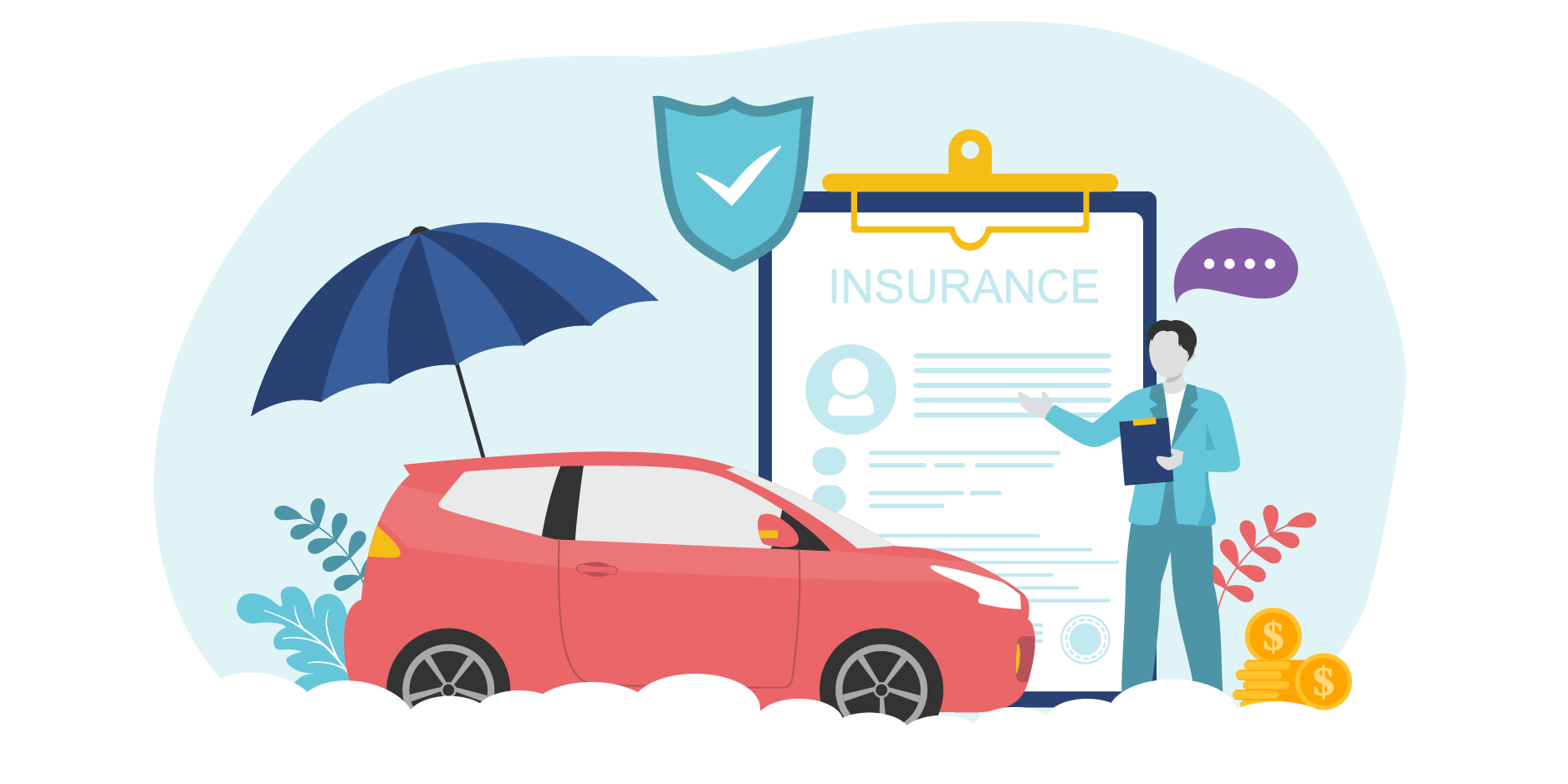What to Know Before Buying Car Insurance for the First Time
March 1, 2024

Whether you’re a young driver, a new driver, or a recent immigrant, getting your first car in Canada is an exciting milestone. The less exciting part that comes alongside it? Having to buy car insurance for the first time. How do you approach securing the right policy for your vehicle as you prepare to hit the road? Where do you even start?

With so many options on the market and no clear way to determine what’s best, it’s no secret that navigating the world of Auto Insurance for the first time can be overwhelming. But don’t let the complexity put the brakes on your excitement—we’ve put together a list of the most frequently asked questions to help demystify the process for first-time car insurance buyers!
From understanding the basic Auto Insurance requirements to finding the perfect balance between coverage and cost savings, keep reading and you’ll have the knowledge you need to get behind the wheel with confidence!
Why is Auto Insurance necessary?
Auto Insurance is required by law across Canada to ensure baseline protection for all drivers, including those with leased vehicles. Mandatory Auto Insurance means that people are not only protected in case another driver involves them in an incident, but also that drivers will be held accountable for any harm caused to other individuals or vehicles. This, in turn, encourages responsible driving behaviours and overall safety on the road.
Accidents happen—and having Auto Insurance in place helps to distribute and manage the financial risk by collecting premiums from a large group of policyholders to cover the costs of those who need it the most. Without this coverage in place, it would be much more difficult for victims of car accidents to seek compensation from at-fault parties or afford the associated costs that may arise as a result, such as car repairs, healthcare, or lost income.
RELATED: Steer Clear of These 7 Costly Auto Insurance Mistakes
Does Auto Insurance have mandatory coverages?
While Auto Insurance is compulsory in all of Canada, each province and territory has established its own regulations surrounding the minimum coverage requirements. These rules are always subject to change, so we recommend consulting a licensed insurance professional for the most up-to-date information.
The following types of coverage are mandatory in Ontario as of 2024, and will be included in all standard policies:
- Third-Party Liability: If you’re found to be at fault for a car accident, you’ll be liable for damages incurred by others, including injuries and property damage. With third-party liability coverage in place, you’ll be covered for the cost of repairs or replacement of damaged property or vehicles, medical bills as a result of bodily injury to a third party, as well as legal expenses. There is a minimum standard amount of coverage required, however, you can opt for increased coverage amounts.
- Uninsured Automobile Insurance: If you get involved in an incident with an uninsured and/or unidentified motorist, this type of coverage will protect you by bridging the gap when the at-fault party is unable to cover damages. This includes situations where you or your vehicle sustain damages due to a hit-and-run.
- Accident Benefits: If you are injured in a car accident, regardless of who is at fault, Accident Benefits will step in to help you cover medical and incidental expenses resulting from accident/injury-induced unemployment. The minimum coverage requirements include: Medical, Rehabilitation, and Attendant Care Benefits, Income Replacement Benefits, Caregiver Benefits, Housekeeping and Home Maintenance Expenses, and Death and Funeral Benefits. Additional benefits and increased coverage amounts are also an option—for more details, visit PROLINK’s Enhanced Accident Benefits page.
Does Auto Insurance have optional coverages?
While opting for the standard levels of coverage as required by law will protect you in many situations—keep in mind that if you settle for the bare minimum, you could be leaving yourself vulnerable to several exclusions. It’s also worth noting that if you lease or finance a vehicle, additional coverage may be required by your leasing company.
To enhance your protection, the following types of coverage are optional Auto Insurance add-ons in Ontario:
- Direct Compensation Property Damage (DCPD): If your vehicle is involved in an incident where someone else is at fault, DCPD means that your insurer will compensate you directly to cover the costs associated with the damages to your vehicle, its contents, and the loss of use of your vehicle. DCPD was formerly mandatory in Ontario, but as of January 1, 2024, drivers can choose to opt out—although we would advise against foregoing this coverage, as it’ll leave you exposed to risks.
- Collision Insurance: Covers damages to your vehicle if you get involved in a collision with another vehicle or a stationary object, including hit-and-run losses. If you have DCPD as part of your policy, then you’ll automatically be covered when you’re not at fault—but you’ll still need Collision Coverage to be protected for at-fault collisions, including single-car collisions. Learn more.
- Comprehensive Insurance: Covers damages to your vehicle that aren’t caused by collisions, such as theft, fire, vandalism, extreme weather, and falling objects. Generally speaking, this coverage will protect you from events that are largely out of your control. Learn more.
- Specified Perils Coverage: Covers damages to your vehicle from specified perils named in the policy. This coverage will vary depending on your insurance company, but commonly includes items such as hail, windstorms, fire, and theft.
- All-Perils Coverage: One of the most extensive insurance add-ons, combining Collision Coverage and Comprehensive Coverage.
- Accident Forgiveness Coverage: This one-time coverage will prevent your insurance company from increasing your premium cost after your first at-fault accident. Learn more.
The “right” amount of coverage is different for everyone’s circumstances—do your research and consider your options carefully. If you have any questions, don’t hesitate to reach out to a trusted insurance broker!
RELATED: Collision vs. Comprehensive Insurance: What’s the Difference?
How much will my Auto Insurance cost?
As a new driver or first-time Auto Insurance buyer, you might be surprised to find out how much your coverage will cost you. The average Ontario driver pays $1,655 per year, or $138 per month in Auto Insurance premiums, with costs varying across individual drivers. But what exactly goes into determining the specific cost of your policy? Some of the biggest factors that influence your insurance costs include:
- Your vehicle. The specific car you drive, including its make, model, year, and additional safety and anti-theft features can all have an impact on your insurance costs. Insurance companies use past insurance claims data to determine the risk levels associated with certain vehicles; this is known as the CLEAR (Canadian Loss Experience Automobile Rating). The lower the CLEAR rating, the lower the claims risk—which in turn, results in lower insurance rates.
- Your location. The city or town you live in can affect your premium costs, right down to your postal code! Those living in more densely populated areas will usually be considered higher risk, since Auto Insurance premiums reflect the rates of car accidents and theft in the area.
- Your driving history. Your driving record and claims history are significant factors contributing to your premiums. Having little to no driving experience and/or previous Auto Insurance experience is typically seen as risky by insurance companies, and will result in higher costs until you’re able to build up a few incident-free years. The same goes for those with traffic violations or at-fault accidents in recent years.
- How much you use your vehicle. The more kilometres you’re expected to drive per year, the higher the likelihood of you submitting a claim—and the more you’ll end up paying for coverage. If you don’t have a daily commute and tend to drive infrequently, consider looking into Usage-Based Insurance as an alternative to traditional Auto Insurance.
- Who drives your vehicle. The age, gender, and experience level of the driver(s) using your car (including yourself) can impact on your insurance rates. New or inexperienced drivers, male drivers, and those under 25 or over 70, tend to be seen as higher risk. If there’s anyone else regularly driving your car, be sure to add them as a secondary or occasional driver under your insurance policy so that they’re also covered!
- The discounts you’re eligible for. Insurance companies don’t always advertise them, but they often offer plenty of discounts for clients! You could see savings on your Auto Insurance policy by completing an accredited driving course, graduating from a G2 license to a full G, having safety features in your car, using winter tires, paying your premium annually instead of monthly, bundling your Home and Auto policies, and more! For additional details, check out The Top 17 Auto Insurance Discounts Revealed!
How can I save more on my first-time Auto Insurance coverage?
If you’re concerned about finding the right policy as a first-time Auto Insurance buyer with no prior insurance history, we’ll let you in on a secret: shopping around is the key to finding the best price for the coverage you need!
Not only does each insurance company have a different method of calculating risk profiles, but they also offer different discounts and premium rates for similar coverage. Be sure to do your research on the options out there on the market, and compare quotes from different insurance companies. If you go with the first quote you receive, then you’ll never know what else could be out there!
We know that the concept of buying Auto Insurance can seem intimidating to the uninitiated—that’s where an independent insurance broker can come in to give you a helping hand. Unlike most insurance brokers, an independent broker isn’t affiliated with any particular insurance company and isn’t obligated to push only their products. That means they have access to options from a variety of insurers, and can really help you determine what’s best for your needs, without any limits or biases.
Whether you lack the time or energy to shop around yourself, or you just want a little professional advice, working with a trusted broker like PROLINK can help relieve some of the pressure that comes along with insuring your vehicle for the first time.
RELATED: 5 Advantages of Using an Independent Insurance Broker
Need some help finding the ideal Auto Insurance policy? You can count on PROLINK. Our dedicated team of advisors will survey the market on your behalf, answer any insurance-related questions you have, and help you weigh the options available to you. With over 40 years in business and access to a wide network of over 30 insurance providers, we have the experience and know-how to get you the right coverage, from the right insurer, at the right price.
To learn more, connect with PROLINK today!
PROLINK’s blog posts are general in nature. They do not take into account your personal objectives or financial situation and are not a substitute for professional advice. The specific terms of your policy will always apply. We bear no responsibility for the accuracy, legality, or timeliness of any external content.




